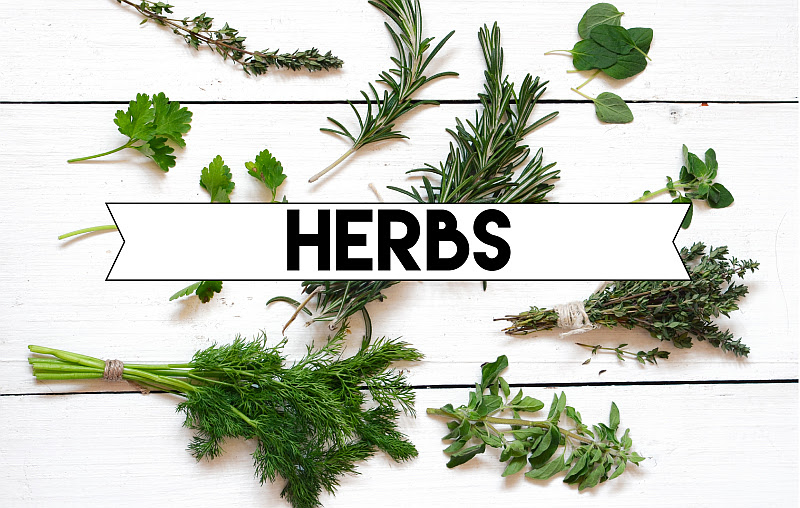Question and answer section
Grow Herbs!
Herbs can be used in a variety of ways: in the kitchen, medicinally, and ornamentally. For example, basil adds flavor to salads and sauces, chamomile tea soothes the whole body, and lavender will freshen any room with its beauty and scent.

Cultivation Herbs can be grown either in pots or directly in the ground. Keep in mind that mint is very aggressive and will quickly take over your garden, so it’s best to plant it in containers. Some species of rosemary and lavender form large bushes and will need room to do so. If you are planting directly in the ground, choose a site that gets at least six hours of direct sunlight. (Mint can take some shade.) Mix in both compost and sphagnum moss to lighten up the existing soil and provide proper drainage.
Once planted, herbs require little attention. Like most plants, they do not like soil that’s too wet, but like just the right amount of water. It is generally ideal for the soil to be slightly cool and moist to the touch. Little fertilization if any is required. Fertilization actually detracts from an herb’s flavor.
Herbs rarely suffer from severe disease or insect damage, but in case pests do invade, fight them with an organic method such as ladybugs, neem oil, or one of the Safer® products.
Most of the common herbs will stay with you throughout the years. The exceptions are basil and cilantro, which are annuals and die off each year, and parsley, which is a biennial and lasts two years.
Watering Herbs
• Frequent watering and feeding: parsley, cilantro, peppermint, chives, garlic chives
• Less frequent watering/regular feeding: basil, dill, oregano, marjoram, tarragon
• Infrequent watering/regular light feeding: thyme, sage, rosemary, winter savory, lavender
Harvesting
With most herbs, harvesting the tips (“pinching back”) results in new growth and bushier plants. Keep your herb garden as close to your kitchen as possible and have a set of snips or pruning shears on hand, so you can harvest spontaneously while cooking. Most culinary herbs reach peak flavor when the flower buds are just about to open (although herbs in the mint family are generally best in full flower). For peak flavor, harvest in the morning, when the sun is still low. Keep in mind that harvesting more than one-third of any plant may weaken it.
Simple Preservation
Use herbs fresh or preserve them for future use. If you pick one or two too many stems for the dish you are cooking and prefer to take a more casual approach to preserving the extra, use one of these methods: Lay the extra herb sprigs anywhere in your kitchen where they will get sufficient air circulation and be out of the way. You can use them anytime as they dry. Or cut them into small enough pieces to place in a small glass jar, cover with olive oil, and cover tightly. Use both the olive oil and the herb sprigs to flavor your favorite meal.
Frozen Herb Cubes
Chop two or more cups of basil or other herb leaves in a blender or food processor. Use a single herb or combine herbs for your favorite recipe. Add enough water to make a thick purée. Pour mixture into an ice cube tray and freeze immediately. When frozen, remove cubes and store in the freezer in labeled bags. To flavor soups or sauces, simply drop in an herb cube or two. The flavor will be very close to that of fresh-picked herbs.
Dried Herbs
Drying herbs makes them easy to store and use. When done correctly, dried herbs retain much of their original flavor. Use an oven or dehydrator or air dry. It is easy to overdry herbs in a gas or electric oven; we recommend the microwave for small quantities. Spread several stems on a double-thick paper towel and cover with one layer of paper towel. Microwave on full power for about 1 minute, turn stems over, and dry them on full power for another minute or so, or just until they turn brittle but stay in one piece when touched gently.
Air-dry large quantities of herbs in a dark, dry place. Cut long stems, bundle loosely, and hang upside down. If dust is a problem, drape a thin cloth, paper bag, or tissue paper over the top. Or dry herb stems on a wire rack between two layers of thin cloth or tissue. The key is to insure plenty of air circulation and a low-humidity atmosphere (needless to say, fall is the best time to air-dry herbs in San Francisco). Once dried, herbs are best stored in a dark, cool place in airtight glass containers. Label and date the containers and check for condensation several days after you put them in storage.
Stay in the loop!
Sign up to receive our emails!
